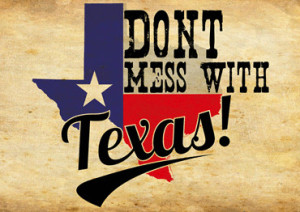 “Think outside the ______.”
“Think outside the ______.”“15 minutes can save you ________.”
"You’re in good hands ________.”
“What happens in Vegas, __________.”
No doubt you’ve filled in the blanks. That’s because these slogans are embedded in your brain from years of seeing and hearing them. And with each slogan you have a picture of the brand in mind. After all, these are memorable slogans!
Just a few words. That’s all there is in a memorable slogan.
But creating a slogan takes more than a few words. It takes finding the right words that, when put together, express your brand strategy and stick in the reader’s mind. Most of all, a memorable slogan compels the reader to buy your product like a fisherman reels in fish with a sharp hook and an unbreakable line.
This is why some companies pay advertising gurus on Madison Avenue the big bucks to create the best slogans for their brands.
Great slogans are the gateway to brand loyal customers and higher sales. No matter what size company you have or what industry you may be competing in, your business can benefit from a memorable slogan.
A good slogan can build your brand. But a bad slogan can kill your company.
A good slogan is not only memorable, but it grows in the minds of your audience. Over time it causes a behavioral response.
A bad slogan is not only forgettable, but it can ruin the perception your audience has about your brand and your company.
What Does It Take to Create a Memorable Slogan?
The good news is you don’t always need to go to Madison Avenue to create a memorable slogan. What you do need is a creative copywriter, a well-thought out marketing strategy and insightful research into your target market. Once you share your strategy and research with your copywriter, he or she can create your slogan.
Slogans vs. Taglines
The first thing you need to be aware of is that a slogan is different from a tagline. They may look the same, but the results from their use can differ.
Slogans are longer in the number of words than taglines. A tagline is usually an abbreviated version of a slogan. The fewer words in taglines diminish the impact.
In 2011 FedEx launched an advertising campaign with the tagline “We Understand.” Now compare this to their slogan “When it absolutely, positively has to be there overnight.”
As you can see, the tagline by FedEx is vague. It says very little. And it must have other words to better define its meaning. Plus it is not memorable.
On the other hand, the FedEx slogan is powerful. It defines the brand. It not only tells you the benefit of its service, but it also leaves a memorable image. When you have a package that you need to have in the hands of your customer the next day, you remember this slogan.
Another example is by Hertz. They have a tagline “Journey On.” Now compare this to their slogan “Let Hertz put you in the driver’s seat.” Again, the slogan is much more meaningful and memorable than the tagline.
Slogans Are about Emotion
Slogans induce emotion in the audience. Emotion is what drives people’s desires for your product. If you sell life insurance, you may want your slogan to induce fear in your reader. If you sell investments, you may want to induce greed in your slogan. Without emotion, there can be no sale. Emotion is what makes people connect with your slogan. And emotion makes it memorable, too.
Memorable slogans can range from 6 to 12 words. Consider some of the following slogans:
“15 minutes can save you 15 percent or more on car insurance.”
"Roto Rooter. That's the name and away go troubles down the drain.”
"Cleans your teeth while it cleans your breath"
“We’ll leave a light on for you.”
"It's everywhere you want to be."
Geico, Roto Rooter, Dentyne Gum, Motel 6 and Visa Credit Cards have memorable brands in part because their slogans are memorable.
4 Ways to Make a Memorable Slogan
There are four ways to make your slogan stick in the consumer’s mind, according to Al Ries, an author of many popular books on marketing. These four ways include rhyme and alliteration, double entendre, repetition and reversals.
Rhyme and Alliteration
A rhyme is a repetition of sounds, usually vowels that are similar in two or more words. An example is car and far. Alliteration is the repetition of the same consonant at the beginning of each stressed syllable in a line. For instance "Betty Botter bought some bitter butter.”
Famous slogans that use rhyme and alliteration include:
"Takes a lickin' and keeps on tickin'." (Timex)
"Melts in your mouth -- not in your hand." (M&M’s)
"Roto Rooter. That's the name. And away go troubles down the drain." (Roto Rooter)
Double Entendre
Double entendre is a phrase that you can interpret in two ways. Typically one of the interpretations is obvious whereas the other is more subtle. Examples of slogans with double entendre include:
"Nothing runs like a Deere" (Deere Agricultural Vehicles)
“Have it your way.” (Burger King)
“Aldo knows what women like.” (Cella Wines)
“Double your pleasure. Double your fun.” (Doublemint gum)
Repetition
Repetition slogans repeat a word or concept. Repetitions slogans include:
Bounty. The quicker picker upper. (Bounty Towels)
“Plop plop, fizz fizz…oh what a relief it is.” (Alka Seltzer)
Tetley make teabags make tea. (Tetley Tea)
Reversals
Reversals contain components of the slogan that are polar opposites. Examples include:
"Our food is fresh. Our customers are spoiled." (Fresh Direct)
"The best surprise is no surprise." (Holiday Inn)
Other Keys to a Memorable Slogan
Including your brand name in the slogan is a good strategy. Consider how much you recall the brands when you see the following slogans:
“You’re in good hands with Allstate.”
“A Mars a day helps you work, rest and play.”
“What happens in Vegas, stays in Vegas.”
A few more things to consider when creating your slogan; make it:
-simple, original and believable
-include benefits that differentiate your brand
-induce positive feelings
Test Your New Slogan
Creating your slogan is just half the battle. You must also test your slogan with your target market both in the U.S. and abroad. Make sure your audience understands what your slogan means. One small misinterpretation or change in translation can cause a big rift in your sales.
Take for instance how people in Mexico translated Frank Perdue's famous slogan, "It takes a strong man to make a tender chicken." The translation of the slogan is “It takes an aroused man to make a chicken affectionate." This is not quite the same meaning as in America.
Changing Your Slogan
If you have a slogan, you can change it. Companies often change their slogans, particularly when there is a change in the marketplace or senior management.
But beware of what could go wrong if the new slogan is not better. Changing a slogan can be risky for a brand that has been successful for a long time. Take The Home Depot, for instance.
The Home Depot once had the slogan “You can do it. We can help.” This slogan fit their brand as the big box retailer that catered to both do-it-for-self and do-it-for-me customers. During the period of this slogan sales and profits increased. The Home Depot became one of the thirty companies that are part of the Dow Jones Industrial Average.
Then The Home Depot changed leadership and following the financial market collapse of 2008 they changed their slogan to “More Saving. More Doing.” You can see the new slogan is not as emotional. The saving part is good, especially in today’s economy. But who truly wants to do more work? After nearly thirty years of consecutive annual sales growth, their revenues are now less than what it was in 2006.
Next Step
If you don’t have a slogan and want to create one, or if you want to create a new and better one, then take advice from Nike. “Just do it!”



Submit a Comment
Your email address will not be published. Required fields are marked *